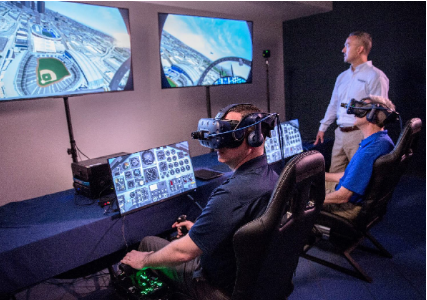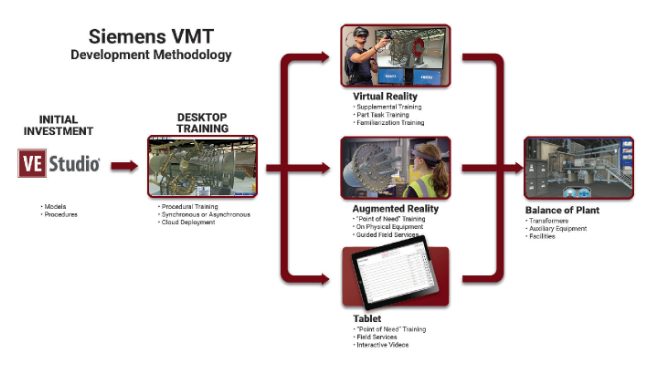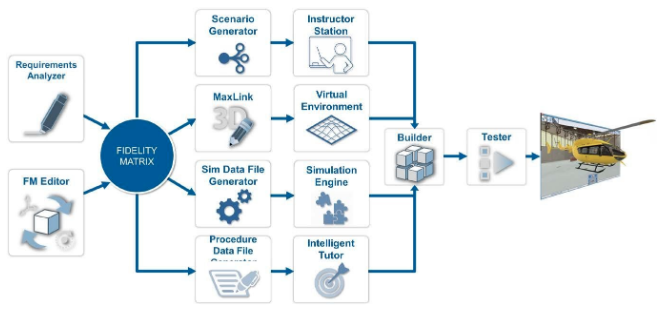Come meet us at the VR/AR Global Summit Nov 1-2
The VR/AR Association Aerospace Committee continues to grow and evolve. Co-Chaired by Samuel Trevino, Insitu (a Boeing company) and Dr. Alethea Duhon, Air Force Agency of Modeling and Simulation. The Committee is comprised of industry players including DiSTI Corporation, Enduvo, FS Studio, Future Visual, Insitu (a Boeing company), J&F Alliance Group Inc, MAF, among others. You can participate here
Below is a recap of what the Committee participants are working on:
J&F Alliance Group Inc is an award winning AR/VR company and we were highlighted in the NASA Spinoff Magazine this year. We are part of the NASA Tech Transfer program and are actively working with the Space Commerce out of DC.
Future Visual, a UK based VR/AR company, specialises in using VR for training, collaboration and behaviour change. It has developed a platform VISIONxR which enables multi user, multi location, multi device (VR, AR, desktop and mobile) collaboration in the same immersive space. Its key clients include IATA (International Air Transport Association) rLoop and the UK Defence Science and Technology Laboratory". It has identified aerospace as a key sector due to the nature of high risk, high value training required and the need for collaboration and visualization involving complex models.
FS Studio is an emerging technologies and experience design agency with specialties in embedded/IoT development, computer vision, AR/VR and robotics simulations. We’re an award-winning developer based in the San Francisco bay area that excels at bringing high quality experiences to life on complex, novel and proprietary hardware and software platforms for education, entertainment and enterprise usage. We solve complex problems in elegant ways, always with an eye toward the end to end experience. We keep great company having worked with some of the leading brands including: Virgin Orbits, Google Labs, John Deere, Ford, Samsung, Unity, Hasbro, Spin Master, PBS kids and others.
Bending Time Technologies is a startup located in Vancouver, Canada developing the next generation 3D Earth application. It provides real-time simulations from space down to the surface at true-scale with 1 cm or better precision in 3D and VR. Founded by Sean Treleaven who has over 17 years of experience in the military and aerospace industries, Bending Time aims to bring high-quality military simulation and visualization capabilities for the cost of an app.
Enduvo is a powerfully simple, no code, way to create augmented and virtual reality content. It’s the only AR/VR content authoring tool that allows anyone, with just a few clicks, to create and quickly share visually stunning, interactive, and immersive experiences. Aerospace organizations use Enduvo to lower costs, speed content delivery, and improve the effectiveness of their training and collaboration. Enduvo is a recent winner of several US Air Force Small Business Innovation Research (SBIR) contracts. The Air Force will use Enduvo to bolster mission readiness by creating and delivering consistent and cost-effective immersive training across many different skill levels, job classifications, and geographies. With Enduvo, people decrease content development costs up to 60%, reduce content delivery time up to 70%, and increase competency up to 80%.
MAF International Mission Aviation Fellowship is an international Christian organisation whose mission is to fly light aircraft, and to use other technologies to bring help and hope to people in some of the world’s poorest communities. Every four minutes a MAF plane is taking off or landing somewhere in the world to assist over 1,000 other organisations. We have about 130 airplanes that fly in remote locations around the world. We are looking at training young people with engineering apprenticeships and growing our ability to train these local people who don’t have opportunities in poor countries. I would love to look at the internet of things to work on solutions with training.
Boeing/Insitu designs commercial and military aircraft to be used around the world and in space. We seek to modernize a turn-key distributed training solution capable of maintaining compliance with various governing agencies around the world, while not sacrificing standards and quality of training. Over the past 2 years, Insitu has graduated more than 3,000 pilots and technicians to work on UAS deployed around the world. Our goal is to provide a seamless solution with critical contributors to continue our global training scaling initiative.
More info here
Email info@thevrara.com if you would like to participate on our next conf call!









